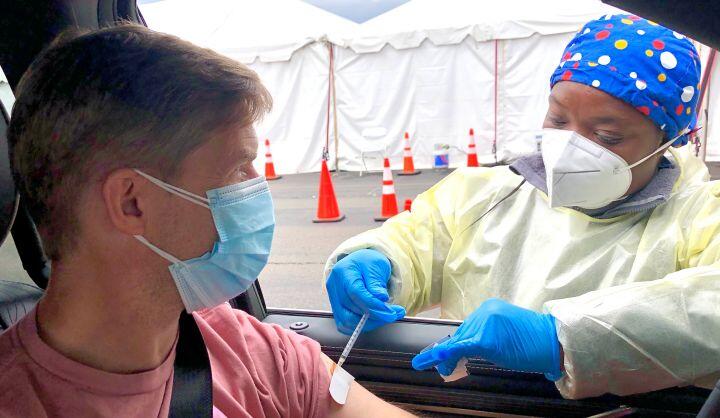- June 25, 2020
- COVID-19
The World Health Organization recently published a COVID-19 behavioral insights tool to help governments measure “public knowledge, risk perceptions, behaviours and trust” during the current pandemic. While researchers are working round-the-clock to find a vaccine, the current best methods for combating the novel coronavirus are behavioral, like hand washing, mask wearing, and physical distancing. However simple these may seem, it’s still a challenge to change behaviors. This is why we’ve put together four ways to use behavioral insights to more effectively nudge people toward safer practices.
1. Warn people about the “perceptions of lower risk”:
There is a lot of evidence that when we engage in a protective behavior (like wearing a seat belt), we simultaneously engage in more risky behavior (like driving faster) under a false assumption that we have lowered all risk just because of that first, preventative behavior. This is due to the “perception of lowered risk,” and as mask wearing becomes more commonplace, there is a significant chance that wearers will, unintentionally, engage in riskier behaviors. This includes not practicing physical distancing, less frequent hand washing, and more frequent face touching. Government and community leaders should remind people to stay vigilant and to continue practicing other healthy behaviors, even if they’re wearing a mask.
2. Facilitate the creation of new cues and habits:
Data shows that many of us wash our hands less than we think, which is especially concerning during a pandemic where hand washing is one of the most effective ways to prevent the spread of disease. One way to increase hand washing is to link the practice to another established behavior, such as the “blow, throw, and wash” habit which ties hand washing to tissue use. When we are cued by a poster, another person, and/or an established behavior, we begin to make hand washing a habit, which is one of the “most effective and sustainable” tactics for fighting COVID-19. Businesses, households, and local government can campaign to cue and habituate handwashing among employees, family members, and residents.
3. Encourage substitute or alternative behaviors:
According to studies on hand-to-face contact, and probably your own experience, humans generally touch their faces often — and without a second thought. Right now, that’s a particularly dangerous habit and one that many people are trying to break. Behavioral insights data on nail-biting (another hand-to-face, unconscious habit) shows that “positive procedures” that offer a substitute behavior are effective in curbing nail biting. These could include anything from finger tapping on a table to folding paper to playing with a small object. Remind constituents about the risks of their unconscious face touching, but couple it with alternative actions to take instead.
4. Understand that different groups need different interventions:
Interventions should be tailored to best address different populations. For instance, there are many factors that affect how a young person views the pandemic and conducts preventative measures versus an older adult. There are also cultural differences that are magnified with a global crisis; for instance, providing substitute greetings in a country where kiss-greetings are the norm will look different than ones where a handshake is typical. And messages about hand washing will need to be adapted for groups that live without consistent access to running water. Targeted intervention will be more successful.
For the foreseeable future, preventing the spread of the novel coronavirus will rely on adherence to safe, hygienic behaviors. Using these insights will help everyone align with best practices and reduce infections.






